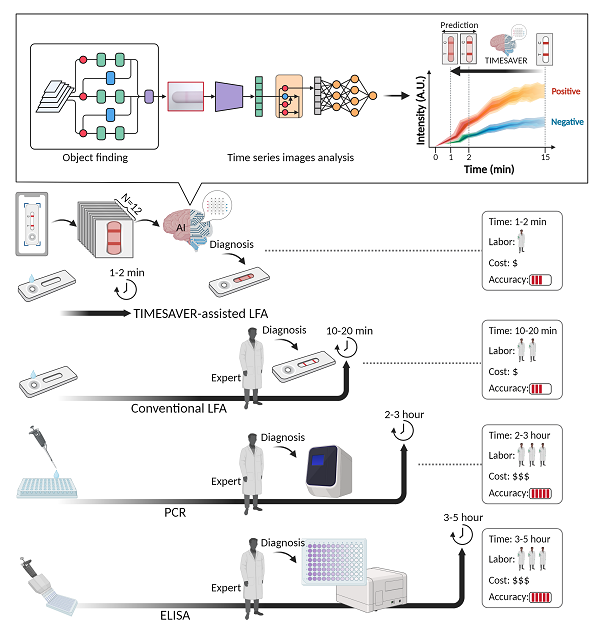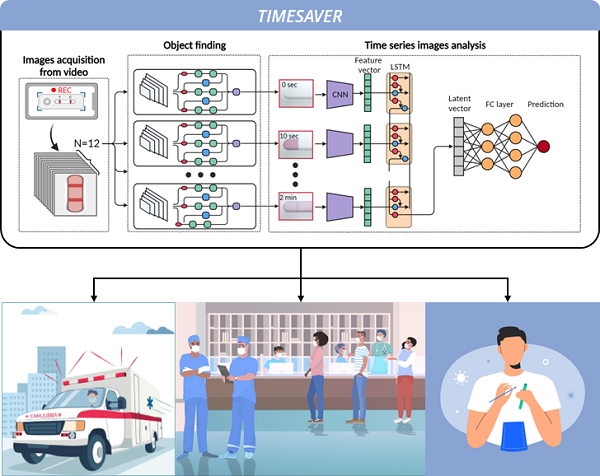Revolutionizing Healthcare: Smartphone AI Detects Myocardial Infarction in Minutes
- admin
- 2024-03-13
- 1133
The Research team of Professor Jeong-hoon Lee's team has developed the world's fastest diagnostic/predictive technology using deep learning AI on smartphones: Detecting myocardial infarction within 1-2 minutes
-
Introducing the world’s fastest diagnostic/predictive technology using deep
learning technology -
- Enabling
rapid response to emergency situations such as myocardial infarction even in
the ambulance -
-
Presenting a key technology that can dramatically reduce waiting times at
hospitals -
-
Proposing a paradigm shift in the management of new/variant infectious diseases
and chronic diseases using smartphones -
- Published in Nature Communications (IF: 17.69) -
The research team of Professor Jeong-hoon Lee (Department of Electrical Engineering) has successfully developed a deep learning algorithm for early diagnosis (TIMESAVER: Time-Efficient Immunoassay with Smart AI-based Verification). The team achieved expert-level accuracy within 1-2 minutes for on-site diagnosis using commercial rapid kits.
The research was supported by the Bio-Medical Technology Development Project of the Korea Research Foundation (No. 2023M3E5E3080743) and published in Nature Communications, a top-tier journal by the Nature Portfolio (IF: 17.69).
Journal: Nature Communications
DOI: 10.1038/s41467-024-46069-2
Title: Rapid deep learning-assisted predictive diagnostics for point-of-care testing

From Left to right: Chief researcher, Professor Jeong-hoon Lee (Kwangwoon University), core researchers, Seung-min Lee (co-first author: Ph.D. candidate), Jung-soo Park (co-first author: Ph.D. candidate), Hyo-won Woo (co-first author: Master's candidate)

Figure 1: Overview of the diagnostic system using time series prediction deep learning (TIMESAVER). While conventional diagnostic methods take several hours of lengthy analysis time, applying this time series deep learning algorithm can significantly reduce the diagnosis/screening time to 1-2 minutes.

Figure 2: Through this technology, three significant effects can be achieved: First, emergency diagnosis through high sensitivity/high-speed diagnosis. Second, diagnosis without waiting. Third, paradigm shift in home care as well as in field/emergency rooms. (Image source: iStock, Vecteezy)